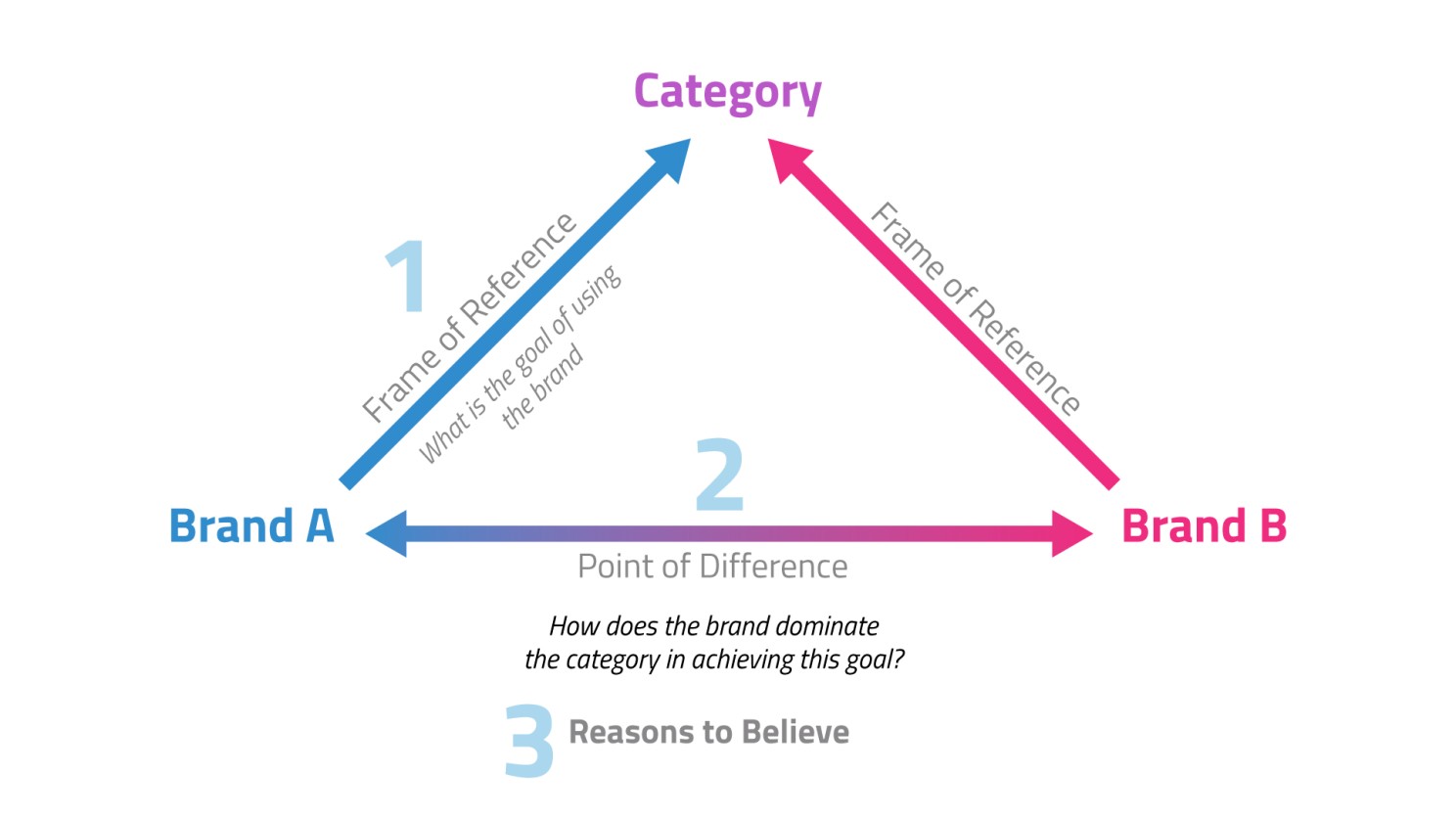
Brand positioning is a cornerstone of marketing strategy and a critical element in the success of any brand. However, while it is widely used, the concept is often misunderstood. The confusion partly stems from mistaking the general term ‘position’ for the marketing concept of ‘positioning’. This article aims to clarify this marketing concept by explaining its elements, illustrating how they interlink, showcasing examples, and highlighting contemporary perspectives.
As stated above, one of the root causes of the confusion around brand positioning is the tendency to equate technical marketing terms with their everyday meanings. This isn’t a dilemma exclusive to positioning. Technical terms, when resembling common words, are often misunderstood – much like the inability of most business leaders to differentiate between what a vision is and what a mission is or confusing the statistical term ‘Regression’ with the general notion of reverting back to a previous state.
So what indeed is the marketing concept “Positioning”? When people hear ‘positioning’, they vaguely associate it with how a brand is placed in the consumer’s mind. While not entirely incorrect, this notion lacks depth and direction for effective brand building.
To dispel the fog around brand positioning, let’s dissect it into its three primary components, as represented in the diagram below.

1. Frame of Reference (FOR)
The FOR is the foundation upon which brand positioning is built. It establishes the context in which the consumer can appreciate the goals of using the brand. It contextualizes the brand by answering, “What fundamental need does this brand fulfil?” or “What category does it belong to?”. While foundational to a brand’s position, this is the element most people leave out when considering positioning their brand.
2. Point of Difference (POD)
Once the Frame of Reference is established, the next step is to define how the brand excels in fulfilling the consumer’s goals. The POD can be functional, like innovative features or higher quality, or emotional, such as status or a sense of belonging. Unfortunately, many brand owners jump directly to this step without establishing a solid Frame of Reference.
3. Reason to Believe (RTB)
The final ingredient offers a persuasive reason for consumers to believe the brand’s claims. This can be factual evidence, awards, testimonials, or any proof that reinforces the brand’s credibility.
Traditionally, these elements are woven into a positioning statement that is structured as follows: “For [TARGET CONSUMER], brand X is [FOR] that [POD] because [RTB].”
Here are three examples of the positioning statement:
-
- Volvo – For FAMILIES (TC), Volvo is the FAMILY CAR (FOR) that OFFERS THE PERFECT BALANCE BETWEEN SAFETY AND DURABILITY (POD) because of VOLVO’S HISTORY OF INTELLIGENT DESIGN (RTB).
-
- DANGOTE CEMENT – For CONSTRUCTION COMPANIES SEEKING RELIABLE QUALITY (TC), Dangote Cement is the TRUSTED CEMENT BRAND (FOR) that GUARANTEES STRENGTH AND DURABILITY (POD) because IT’S CRAFTED WITH TOP-GRADE MATERIALS AND A COMMITMENT TO EXCELLENCE (RTB).
- DHL – For BUSINESS MANAGERS AND PROFESSIONALS ENGAGED IN MAKING TIME SENSITIVE DECISIONS ABOUT INTERNATIONAL BUSINESS (TC), DHL is THE MOST PUNCTUAL SERVICE (POD) among PROFESSIONAL COURIER COMPANIES (FOR) because ITS PICKUP, TRANSPORTATION, AND DELIVERY SYSTEM IS WHOLLY OWNED AND MANAGED BY DHL PERSONNEL (RTB).
This formula aids in ensuring clarity in a brand’s positioning, which, according to Rosenfeld, Sirowitz & Lawson (1971), is “the most important step in effective selling.” In this classical view, it is imperative for consumers to first understand what a product is and the function it serves (FOR) before they can gauge how it is better than other brands (POD).
Traditionally, brand positioning was viewed as a static declaration. However, the contemporary perspective considers it more dynamically, as the mental availability across various Category Entry Points (CEPs)[1]. In the contemporary view, positioning is an ongoing dialogue with the consumer, requiring adaptability and a keen sense of market trends. A brand with strong positioning in this sense is mentally available across an extensive range of CEPs.
An example illustrating the importance of understanding the elements of positioning and systematically building them is GCB Bank’s G-Money product. In the mobile money category, there is MTN Momo, whose FOR is Mobile money for MTN customers, Vodafone Cash Mobile money for Vodafone customers and Airteltigo Money for Airteltigo customers. These brands were clear about their FOR, focusing on the primary goal of providing mobile financial services to customers of their respective mobile networks. And that is how the marketing understood mobile money.
In contrast, G-Money aimed to be an inclusive mobile money service, catering to everyone regardless of their mobile network. However, the initial communication did not clearly establish this Frame of Reference. Instead, the marketing message jumped straight to a vague point of difference with the tagline “Papa n’aba, twa tum”.This meant that many consumers mistakenly believed G-Money was exclusively for GCB Bank customers, similar to how MTN Momo was for MTN customers and Vodafone Cash for Vodafone users.
This lack of clarity in establishing a distinct Frame of Reference meant that many consumers didn’t even realize that G-Money was meant for them. The brand missed an opportunity to connect with a broader audience right from the start. G-Money could have started by building a strong Frame of Reference. For example, the initial communication could have been centred around “Mobile Money for Everyone”, clearly signifying that G-Money is not limited to GCB Bank customers. Once this foundation was established, subsequent communication could focus on the unique features and benefits that set G-Money apart from competitors.
This example underscores the point that positioning is a strategic process, requiring a well-thought-out approach of first setting a clear Frame of Reference before highlighting points of difference. Without an adequately established FOR, the audience may not fully grasp the basic purpose of a brand, which can hinder brand growth and adoption.
Positioning is essential in brand building. Understanding and implementing it requires more than a cursory glance at its dictionary definition. By establishing a clear Frame of Reference, articulating a distinct Point of Difference, and providing a compelling Reason to Believe, brand owners can lay the groundwork for a potent brand position. Brand owners can navigate the ever-evolving marketplace with clarity and purpose by blending classical methods with contemporary insights.
[1] A Category Entry Point refers to the various situations, occasions, or needs that prompt consumers to think about a product category and consider making a purchase. In other words, it’s the specific set of circumstances that trigger a consumer’s mind to enter a product category. For example, a hot summer day is a category entry point for cold drinks in the beverage industry, as consumers are likely to purchase a refreshing beverage to cool down.
 Brand positioning is a cornerstone of marketing strategy and a critical element in the success of any brand. However, while it is widely used, the concept is often misunderstood. The confusion partly stems from mistaking the general term ‘position’ for the marketing concept of ‘positioning’. This article aims to clarify this marketing concept by explaining its elements, illustrating how they interlink, showcasing examples, and highlighting contemporary perspectives.
As stated above, one of the root causes of the confusion around brand positioning is the tendency to equate technical marketing terms with their everyday meanings. This isn’t a dilemma exclusive to positioning. Technical terms, when resembling common words, are often misunderstood – much like the inability of most business leaders to differentiate between what a vision is and what a mission is or confusing the statistical term ‘Regression’ with the general notion of reverting back to a previous state.
So what indeed is the marketing concept “Positioning”? When people hear ‘positioning’, they vaguely associate it with how a brand is placed in the consumer’s mind. While not entirely incorrect, this notion lacks depth and direction for effective brand building.
To dispel the fog around brand positioning, let’s dissect it into its three primary components, as represented in the diagram below.
Brand positioning is a cornerstone of marketing strategy and a critical element in the success of any brand. However, while it is widely used, the concept is often misunderstood. The confusion partly stems from mistaking the general term ‘position’ for the marketing concept of ‘positioning’. This article aims to clarify this marketing concept by explaining its elements, illustrating how they interlink, showcasing examples, and highlighting contemporary perspectives.
As stated above, one of the root causes of the confusion around brand positioning is the tendency to equate technical marketing terms with their everyday meanings. This isn’t a dilemma exclusive to positioning. Technical terms, when resembling common words, are often misunderstood – much like the inability of most business leaders to differentiate between what a vision is and what a mission is or confusing the statistical term ‘Regression’ with the general notion of reverting back to a previous state.
So what indeed is the marketing concept “Positioning”? When people hear ‘positioning’, they vaguely associate it with how a brand is placed in the consumer’s mind. While not entirely incorrect, this notion lacks depth and direction for effective brand building.
To dispel the fog around brand positioning, let’s dissect it into its three primary components, as represented in the diagram below.

